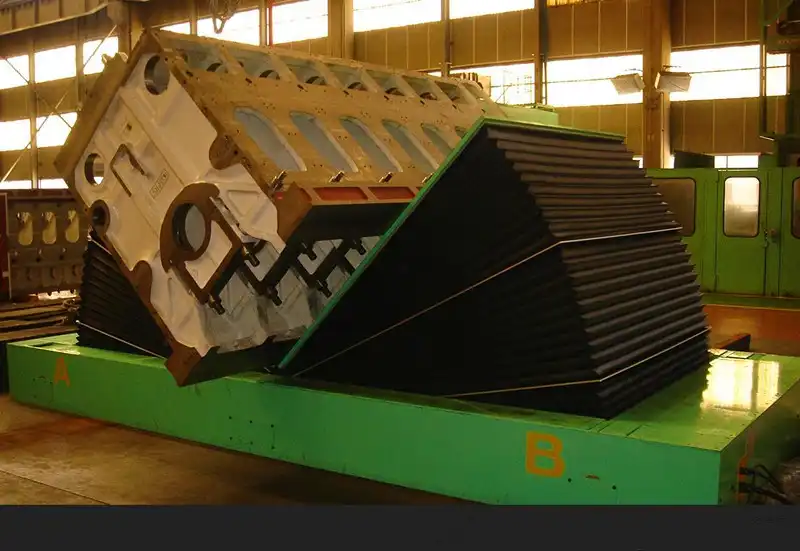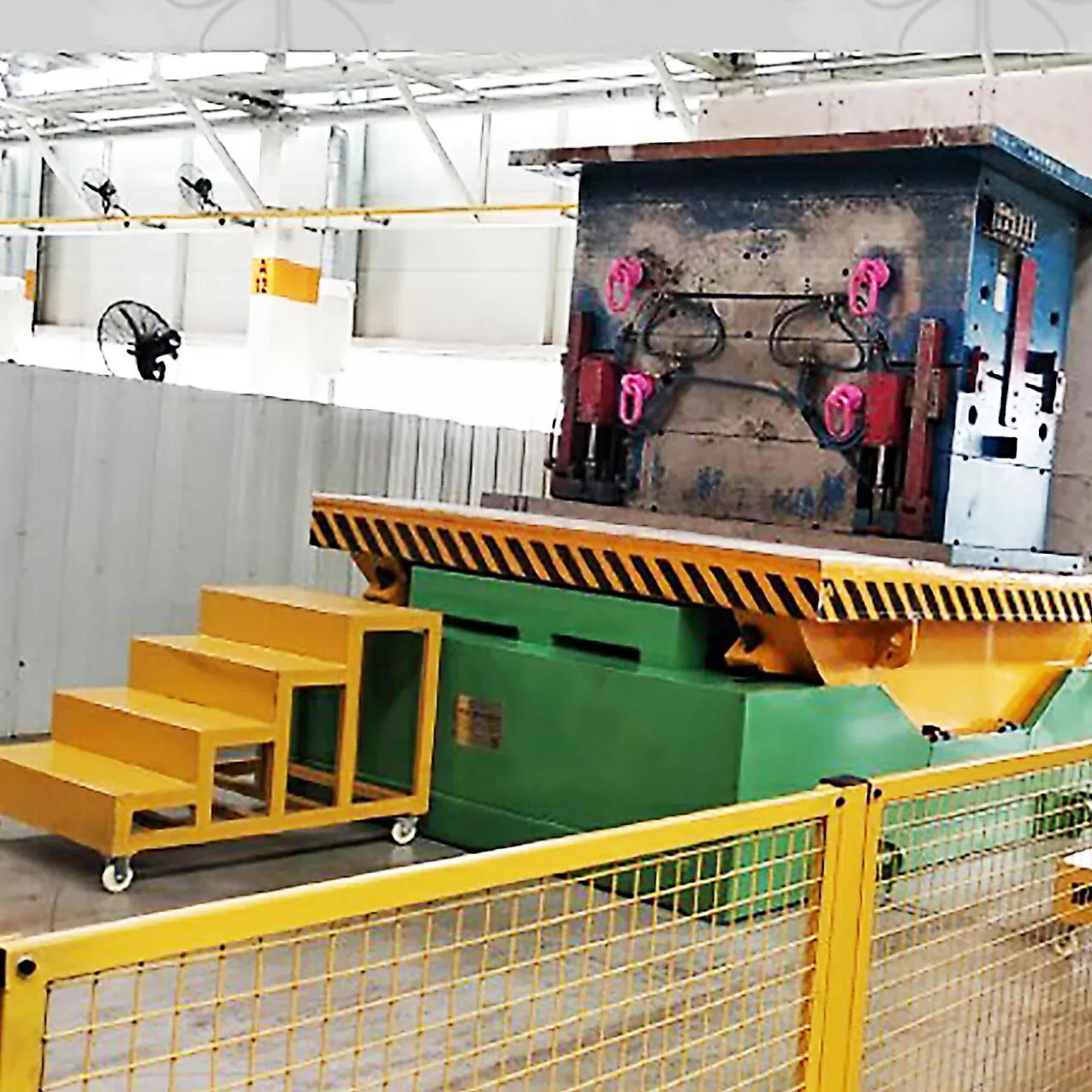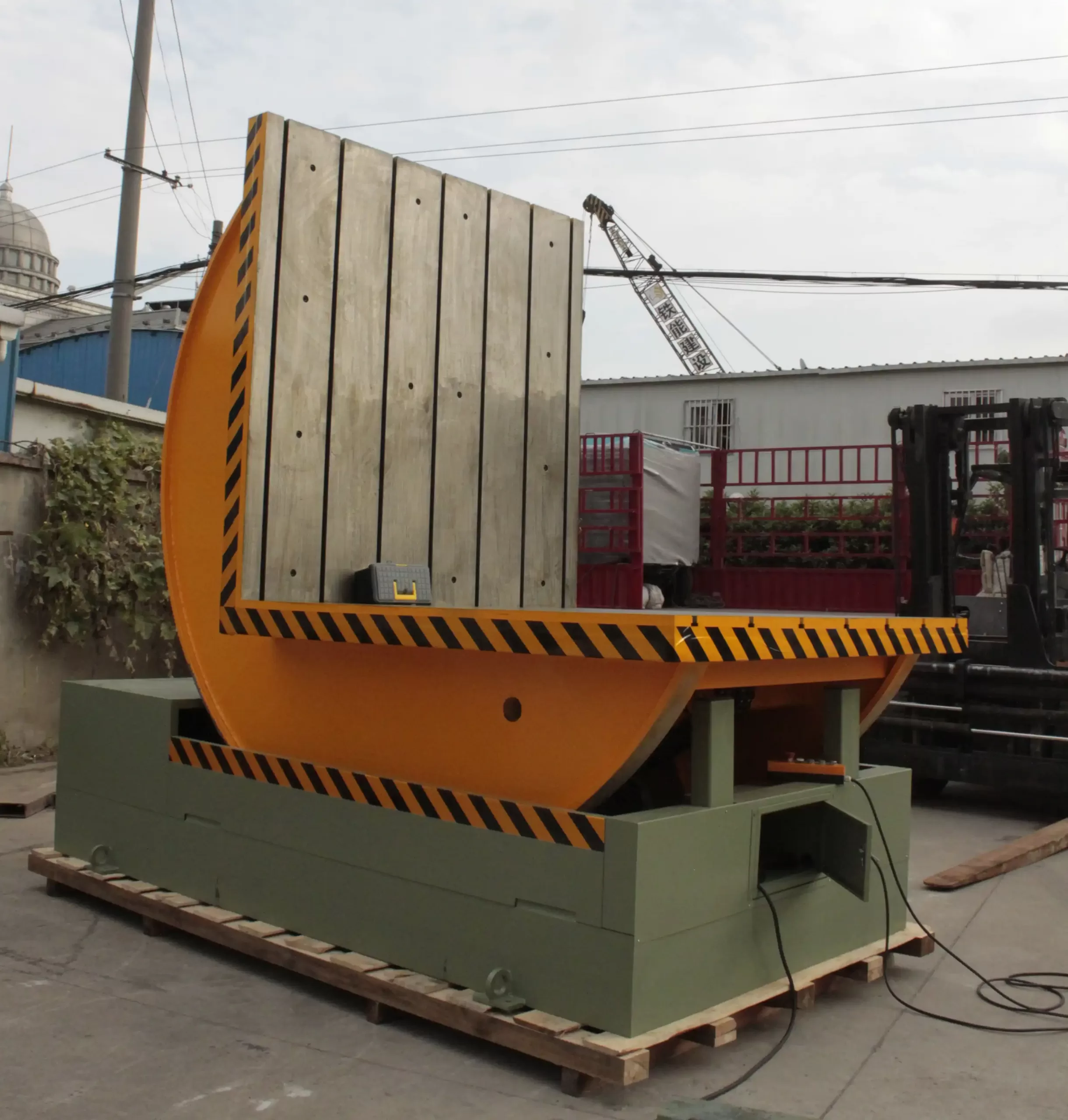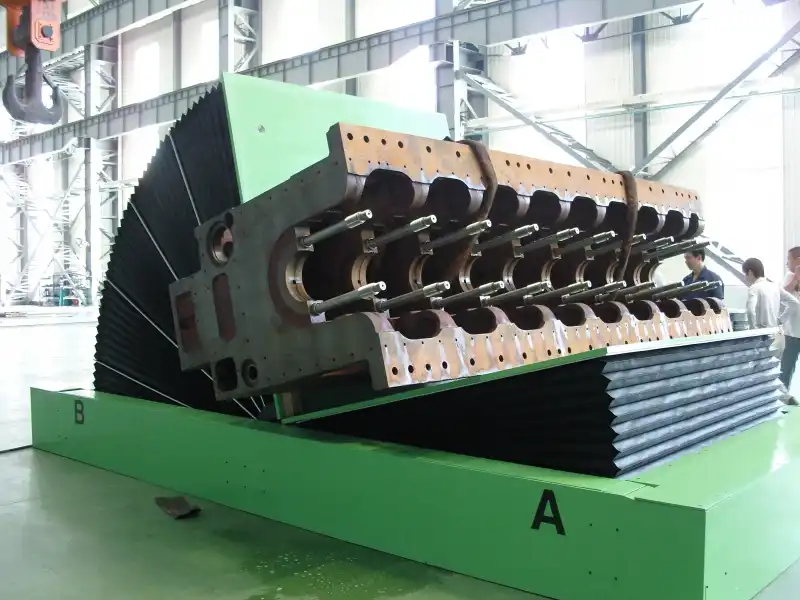Mold Flipper: What KPIs Prove Success for Malaysian Operations?
Running a factory in Malaysia, you know the pressure is always on. You need to be faster, safer, and more cost-effective just to stay competitive. You invest in new equipment, like a mold flipper, expecting it to solve problems. But how do you know if it's truly successful? Many operations simply check if the machine turns on and off. This approach leaves massive value on the table. You might be missing critical data that could unlock further efficiencies, justify future investments, and significantly improve your bottom line. Without the right metrics, your new mold flipper is just a piece of steel, not the strategic asset it should be. The solution is to look beyond the surface and implement specific Key Performance Indicators (KPIs) that give you a clear, data-driven picture of its true impact.
Success for a mold flipper in Malaysian operations is proven by a combination of key performance indicators (KPIs). These include operational metrics like reduced cycle time and increased throughput, safety metrics such as a lower incident rate, financial metrics like a clear return on investment (ROI), and maintenance metrics including a higher Mean Time Between Failures (MTBF).

It is one thing to say you need to track KPIs, but it is another to know which ones truly matter. A long list of metrics can be just as confusing as having none at all. The key is to focus on the numbers that tell the complete story of your mold flipper's performance. These KPIs connect the machine's function directly to your factory's health—from the speed of your production line to the safety of your team and the strength of your financial results. Let's break down the essential KPIs you should be watching.
How do Operational Efficiency KPIs directly measure a mold flipper's impact in Malaysia?
Your production floor has a certain rhythm. Every process is connected. When one step is slow or unpredictable, like a mold changeover, the entire line suffers. You see the production targets slipping, but it can be difficult to pinpoint the exact bottleneck causing the delays. Using outdated methods like overhead cranes and manual labor to flip heavy molds isn't just slow. It is dangerously unpredictable. One changeover might take 30 minutes, the next an hour. This inconsistency creates chaos in your scheduling, wastes valuable labor, and directly hurts your output, a major concern in Malaysia's fast-paced manufacturing sector. A modern mold flipper is specifically engineered to solve this. By tracking the right operational KPIs, you can get clear data showing how this single machine streamlines your entire workflow.
Operational efficiency KPIs directly measure a mold flipper's impact by quantifying improvements in speed and workflow. The most critical KPIs are a reduction in mold changeover time, an increase in production throughput, and a higher Overall Equipment Effectiveness (OEE) for the entire production line it serves.

Deeper Dive: The Numbers Behind Operational Gains
Let's get practical. As an engineer who has spent countless hours on the factory floor, I know that "efficiency" is a word that gets thrown around a lot. But what does it actually look like in numbers? It's about turning abstract goals into concrete, measurable results. For a mold flipper, this starts with the most obvious metric: time.
Breaking Down Mold Changeover Time
The most direct impact of a mold flipper is on the time it takes to get a mold ready for the next production run. The old method is something I’ve seen in hundreds of factories. It involves an overhead crane, heavy chains or slings, and at least two, sometimes three, operators. They have to carefully rig the mold, lift it, slowly turn it in mid-air, and then lower it. The entire process is slow and filled with stops and starts for safety checks. A dedicated mold flipper changes the game entirely. One operator can place the mold on the machine, push a button, and have it safely flipped 90 or 180 degrees in minutes.
| Metric | Traditional Method (Crane) | With Mold Flipper | Improvement |
|---|---|---|---|
| Time per Flip | 30 - 60 minutes | < 10 minutes | > 67% Reduction |
| Operators Required | 2 - 3 | 1 | 50-67% Labor Reduction |
| Equipment Tied Up | Crane, Slings, Rigging | Mold Flipper | Frees up crane for other tasks |
I remember a client I worked with in Penang. They manufactured high-precision components. Their mold changeovers were a 45-minute, high-stress event. After we installed a 90-degree mold tilter, that time dropped to just under 8 minutes. This saved them 37 minutes, but the real value was bigger. It freed up their most experienced crane operator and the overhead crane itself, which was a constant bottleneck for the rest of the plant.
The Ripple Effect on Production Throughput
That saved time translates directly into more production time. If you have five mold changes per day and you save 30 minutes on each one, that's 150 minutes, or 2.5 hours, of extra production capacity every single day. This isn't a small gain; it's a significant boost to your plant's potential output without needing to add another production line. For a leader like Javier, who aims to increase capacity utilization, this is a direct line to achieving that goal. Moreover, the predictability is just as important. Knowing that every changeover will take 10 minutes allows for much tighter, more reliable production scheduling.
How a Mold Flipper Boosts OEE
Overall Equipment Effectiveness (OEE) is the gold standard for measuring manufacturing productivity. It combines three factors: Availability, Performance, and Quality. A mold flipper positively impacts all three.
- Availability: This is the most direct impact. Less time spent on changeovers means more time the production line is available to run. This is a direct input into the OEE calculation.
- Performance: A smooth, fast changeover reduces the minor stops and slow cycles that often happen when a line is restarting. It helps maintain a consistent production rhythm.
- Quality: Traditional flipping with cranes can be rough on molds. A slight bump or an uneven lift can cause microscopic damage that leads to product defects later. A mold flipper handles the mold smoothly and securely, reducing the risk of damage and improving the quality of the first parts off the new mold.
By measuring OEE before and after the installation, you can put a precise number on the mold flipper’s total contribution to your line's health.
What Safety and Compliance KPIs are non-negotiable for mold flippers in Malaysian factories?
Every plant manager or owner carries the weight of their team's safety. The thought of a multi-ton mold slipping from a crane is a real nightmare. It's a low-probability but high-consequence event. Safety is not just a poster on the wall; it is a fundamental responsibility that has huge financial and human implications. An accident involving a heavy mold can be catastrophic. It can cause severe injuries or fatalities, destroy expensive machinery, halt production for weeks, and lead to serious penalties from Malaysian authorities like the Department of Occupational Safety and Health (DOSH). The damage to your company's reputation can be just as severe. A purpose-built mold flipper is an engineered safety solution. It is designed to remove the most dangerous part of the process: the unstable, manual handling of a suspended load. Tracking the right safety KPIs proves its value not just in ringgit, but in protecting your people.
The non-negotiable safety and compliance KPIs for mold flippers in Malaysian factories are a zero or near-zero incident rate for mold handling tasks, a reduction in near-miss reports related to lifting, and full compliance with local DOSH regulations. These metrics demonstrate a tangible improvement in workplace safety.

Deeper Dive: Quantifying a Safer Workplace
Safety can feel hard to measure until something goes wrong. But a proactive approach means tracking leading indicators, not just lagging ones. A mold flipper allows you to see measurable improvements in safety before an accident ever happens. It's about eliminating the hazard at its source.
Driving Incident Rates to Zero
The most important lagging indicator for safety is the Lost Time Injury Frequency Rate (LTIFR). This measures the number of injuries that cause an employee to miss work. Flipping molds with cranes is a well-known source of serious industrial accidents. The risks are numerous: a sling can snap, the load can be unbalanced, a sudden crane movement can cause the mold to swing uncontrollably, or a simple human error can have devastating consequences.
A mold flipper is designed to control these variables.
- The load is contained within a strong, stable mechanical structure.
- The movement is controlled by reliable hydraulics or motors.
- The operator is typically standing at a safe distance, using a simple control panel.
The goal for any mold-handling task should be an LTIFR of zero. By isolating this specific task and tracking incidents related to it, you should see the number drop to zero after implementing a mold flipper. I have personally seen the aftermath of a dropped mold. The damage to the factory floor was incredible, but the impact on the team's morale was even worse. The entire plant was shut down for days for the investigation. That is the kind of event a mold flipper is built to prevent.
Why Near-Miss Reporting Is a Powerful Leading Indicator
A healthy safety culture encourages employees to report near misses—events that could have caused an accident but didn't. Before a mold flipper, your safety logs might contain reports like "mold nearly slipped from chains" or "load swung unexpectedly close to a worker." These are warning signs. After installing a dedicated flipper, these specific types of near-miss reports should disappear completely. This is a powerful leading indicator. It proves you haven't just managed the risk; you have engineered the hazard out of the process. A drop in near-miss reports is one of the best ways to prove, on paper, that your workplace is genuinely safer.
Navigating Malaysian DOSH Compliance
In Malaysia, compliance with the Factories and Machinery Act 1967 and the Occupational Safety and Health Act (OSHA) 1994 is not optional. When DOSH inspectors visit your plant, they will scrutinize your high-risk processes, and mold handling is always on that list.
| Safety Aspect | Crane Flipping | Dedicated Mold Flipper |
|---|---|---|
| Load Stability | Dependent on rigging skills, potential for swing | Mechanically secured, stable base |
| Operator Position | Often in close proximity to suspended load | At a safe distance, behind controls |
| Failure Points | Slings, chains, crane brake, operator error | Contained system with built-in safety features |
| Documentation | Relies on crane and sling certifications | Comes with own CE/certified engineering specs |
A quality mold flipper from a reputable manufacturer will come with the necessary engineering certifications, a detailed risk assessment, and clear operating procedures. This documentation makes demonstrating compliance to DOSH much simpler. It shows that you have proactively identified a major hazard and invested in the best available technology to control it. This is what it means to be a responsible employer.
Which Financial KPIs justify the investment in a new mold flipper for a Malaysian operation?
As a business owner or CEO, you are responsible for the financial health of the company. Every significant purchase needs a solid justification. A mold flipper is a capital expense, and from a purely financial perspective, it needs to prove its worth. How do you convince your board or your finance department—or even yourself—that this is a smart investment and not just a "nice-to-have" piece of equipment? If you can't build a strong business case based on clear financial metrics, the purchase request will likely be denied. You'll be left with the same inefficient and risky processes that quietly cost you money every day through hidden costs like wasted labor, production delays, and the constant threat of a major accident. The solution is to translate the operational and safety benefits into the language of finance. By focusing on specific financial KPIs, you can show exactly how a mold flipper pays for itself and starts generating a positive return.
The key financial KPIs that justify investing in a mold flipper are a short Payback Period, a high Return on Investment (ROI), and a lower Total Cost of Ownership (TCO). These metrics translate the operational and safety benefits into a clear financial argument for Malaysian operations.

Deeper Dive: Building the Business Case
When I started my own factory, I had to learn to think like an investor, not just an engineer. Every machine had to earn its place on my floor. For a leader like Javier, who performs strict feasibility analyses, this mindset is second nature. Here’s how to build a business case for a mold flipper that will satisfy even the most demanding financial scrutiny.
Calculating a Realistic Return on Investment (ROI)
ROI is the ultimate measure of an investment's profitability. The formula is simple: ROI = (Net Gain / Cost of Investment) x 100. The key is to be thorough when calculating the "Net Gain." It's a combination of cost savings and revenue gains.
- Direct Labor Savings: This is the easiest to calculate. If a mold flipper allows you to reassign one operator from the changeover process to a more value-added task, you can quantify their annual salary and benefits as a direct saving.
- Increased Production Value: This comes from the throughput gains we discussed earlier. Calculate the value of the extra products you can make with the time saved. Even a 1% increase in uptime on an expensive production line can translate into significant revenue.
- Reduced Mold Damage Costs: Ask your maintenance team how often molds are sent for repair due to handling damage. A mold flipper's gentle handling can reduce these costs to near zero.
- Avoided Accident Costs: This is harder to quantify but is a real factor. The cost of one serious accident—including medical bills, legal fees, fines, and production stoppages—can easily exceed the cost of the mold flipper itself.
I always advise clients to be conservative with these numbers. Even so, the ROI for a mold flipper is often well over 100% within the first two years.
The Importance of the Payback Period
For many businesses, cash flow is king. The Payback Period tells you how quickly the investment will pay for itself. The formula is: Payback Period = Initial Investment / Annual Savings. A shorter payback period means less risk and a faster return of your capital.
Let's look at a realistic example for a Malaysian operation:
| Item | Cost / Savings (RM) |
|---|---|
| Initial Investment (Mold Flipper) | -150,000 |
| Annual Labor Savings (1 Operator) | +45,000 |
| Annual Production Gain (Value) | +80,000 |
| Annual Maintenance Savings | +5,000 |
| Total Annual Savings | 130,000 |
Payback Period = 150,000 / 130,000 = 1.15 years (or about 14 months).
A payback period of under 18 months for industrial equipment is typically considered excellent. This is a very compelling number to present to a financial decision-maker.
Understanding the Total Cost of Ownership (TCO)
A smart investment decision looks beyond the initial purchase price. The Total Cost of Ownership (TCO) includes the purchase price plus all costs over the machine's lifespan: installation, training, energy consumption, spare parts, and maintenance. A cheaper machine might have a lower initial price, but if it breaks down more often, consumes more energy, and requires constant maintenance, its TCO will be much higher. This is where partnering with a reputable supplier like SHJLPACK becomes critical. A well-built, reliable machine with good support will have a much lower TCO, delivering better value for years to come. This focus on long-term stability and predictable costs is exactly what experienced leaders look for.
How can Maintenance and Reliability KPIs predict the long-term success of a mold flipper?
You’ve done the research, made the investment, and installed your new mold flipper. It works perfectly for the first six months, and everyone is happy. But then, small problems begin. A hydraulic hose starts to weep. A limit switch fails. The machine is down for a few hours. A month later, something else happens. The machine you bought to improve predictability has now become a source of unplanned downtime. Your maintenance team is pulled from their scheduled work to put out fires, and the trust you built in the new system begins to erode. True long-term success isn't just about how the machine works when it's new; it's about how it performs year after year. By tracking key maintenance and reliability KPIs, you can measure the health of your mold flipper and ensure it remains a productive asset, not a frustrating liability.
Maintenance and reliability KPIs predict the long-term success of a mold flipper by measuring its durability and uptime. The most important metrics are high Mean Time Between Failures (MTBF), low Mean Time to Repair (MTTR), and minimal scheduled maintenance hours, indicating a robust and well-designed machine.

Deeper Dive: Engineering for the Long Haul
As someone who has designed and built these machines, I can tell you that reliability doesn't happen by accident. It's the result of deliberate design choices, quality components, and robust construction. For the owner of the machine, tracking its reliability is just as important. These metrics tell you if you bought a piece of equipment that will support your growth for the next decade.
Why Mean Time Between Failures (MTBF) is King
MTBF is the ultimate measure of a machine's inherent reliability. The formula is: MTBF = Total Operational Time / Number of Breakdowns. A high MTBF means the machine simply works, day in and day out, without unplanned stops. When I was running my own factory, this was the number I obsessed over. A machine with a high MTBF allows you and your team to focus on production and improvement, not on repairs. For a critical piece of equipment like a mold flipper, you should be targeting an MTBF measured in thousands of hours. What contributes to a high MTBF?
- Robust construction: A heavy-duty steel frame that doesn't flex under load.
- Quality components: Using reliable, industry-proven motors, hydraulic power packs, and electrical components from reputable brands.
- Simple design: Fewer moving parts and simple, proven mechanisms are less likely to fail.
A high MTBF is the foundation of the trust you place in your equipment.
Minimizing Mean Time to Repair (MTTR)
No machine is perfect; eventually, something will need service. When a failure does occur, the critical question is: how fast can you get it running again? This is measured by Mean Time to Repair (MTTR). The formula is: MTTR = Total Downtime / Number of Breakdowns. Several factors contribute to a low MTTR:
- Clear documentation: A good manual with troubleshooting guides can help your team identify the problem quickly.
- Smart design: A machine designed for easy access to key components makes repairs faster.
- Availability of spare parts: This is where a good partner makes a difference. Having a local or regional supply of common spare parts for the Malaysian market is critical.
- Responsive support: The ability to get an experienced technician on the phone or on-site quickly is invaluable.
A low MTTR is the sign of a well-supported machine and a strong supplier partnership.
Tracking Maintenance Costs and Planned Downtime
This is the other side of the TCO coin. A well-engineered mold flipper should require minimal preventive maintenance—perhaps a weekly visual inspection and a semi-annual check of fluid levels and lubrication points. A poorly designed machine might require much more frequent attention, which adds up in labor costs and planned downtime.
| Maintenance Aspect | High-Quality Flipper | Low-Quality Flipper |
|---|---|---|
| Preventive Maintenance | 2 hours / quarter | 2 hours / month |
| Annual PM Labor | 8 hours | 24 hours |
| Spare Parts Cost (Avg/Yr) | Low | High |
| MTBF | > 8,000 hours | < 2,000 hours |
Over a 5 or 10-year period, a slightly more expensive but more reliable machine will almost always result in a lower total cost and less frustration for your team. This is the long-term thinking that separates good investments from bad ones.
My Perspective as an Engineer and Factory Owner
I've walked in your shoes. I started on the factory floor as an engineer, and later built my own packing machine factory. I've faced the same challenges that leaders like Javier face every day: aging equipment, pressure on costs, and the absolute need to keep my team safe. Early in my career, I saw equipment as a cost center. It was a line item on a budget. But experience taught me a powerful lesson.
I remember one specific piece of handling equipment in my old factory. It was a constant headache. We didn't track formal KPIs back then, but I knew its MTBF was terrible because my maintenance lead practically lived next to it. It broke down constantly, and every time it did, it threw our entire production schedule into chaos. The day we finally replaced it with a modern, reliable machine was a turning point. It wasn't just about the new equipment. The entire atmosphere on the factory floor changed. The operators felt safer and more confident. The maintenance team could finally get ahead and focus on proactive work. We saw the positive impact on our output within the first month.
That experience taught me that the right equipment, measured correctly, is not an expense. It is an investment in your people, your process, and your company's future. The KPIs we've discussed today—operational, safety, financial, and maintenance—are simply the language we use to prove what our gut already tells us. They provide the data to back up the smart decisions that help our businesses grow and thrive.
Conclusion
Ultimately, tracking these operational, safety, financial, and maintenance KPIs proves a mold flipper is not just a machine, but a strategic asset for growth and stability in your operations.




